“How do I help my child get ready to read?” This is the question that I get asked the most often. My first answer is to read books each day with your child.
The second thing I share is to play LOTS of language games and talk, talk and talk some more together.
Phonological awareness is the ability to hear differences in the ways words sound. Just as young children need to hear language before they can talk, they also need to hear language before they can read.
Children with phonological awareness can do things such as identify initial sounds in words, can count syllables in words, and can identify words that rhyme.
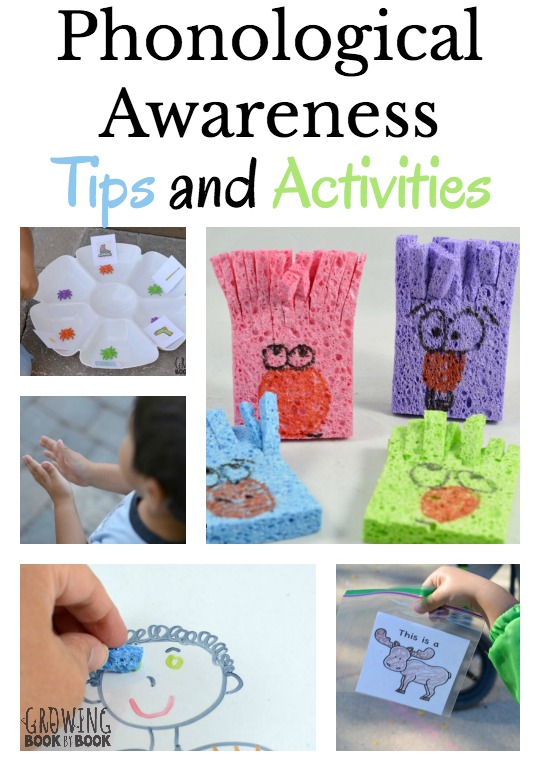
Full Disclosure: This post contains affiliate links.
What is Phonological Awareness?
Let’s explore what phonological awareness is and how to teach it.
Why is it Important to Teach Phonological Awareness?
Having a strong phonological awareness is a precursor to being a strong reader. Let’s take a look at some helpful terminology before moving on any further.
Helpful Terminology
In the following examples, a letter that is sandwiched between two slashes represents the phoneme (an individual speech sound).
phonemic awareness– the ability to break a word down into its individual speech sounds (example: the word pig is made up of three separate phonemes- /p/ /i/ and /g/)
phonics– the ability to match written letters with sounds
onset– the first consonant sound or consonant blend in a word (example: in the word snow, /sn/ is the onset)
rime– the vowel and consonant sounds following the initial consonant sound (example: in the word dog, /og/ is the rime)
rhyme– a word that corresponds with another in it’s terminal (ending) sound (example: hug/rug)
syllable– a sound or word chunk that contains one vowel sound and at least one consonant sound (examples: bug is a one syllable word and snowball is a two syllable word)
So how can you encourage phonological awareness? First, remember that this is an oral awareness. So, you don’t need a lot of resources or materials. You are simply playing with the oral language.
Is Phonemic Awareness the Same as Phonological Awareness?
Phonemic awareness falls under the phonological awareness umbrella. Phonemic awareness is the specific piece of isolating individual phonemes. Identifying beginning, middle, and ending sounds as well as manipulating those sounds makes up the phonemic awareness bucket.
What are the Phonological Awareness Pieces?
Let’s take a look at each part and some ideas to support children who are developing their phonological awareness. There is no hierarchy to these pieces. I do list them from easiest to hardest, but you don’t have to master one before moving to the next.
Awareness of Gross Motor Differences
Hold up two fists and say a sentence together. As you recite each word in the sentence, put up a finger to represent each word. Count how many words are in the sentence. This sentence you are reading has eight words.
Awareness of Rhyme
Do you have a favorite nursery rhyme? Reciting nursery rhymes together is great for identifying rhyming words.
There are also some wonderful picture books available that have rhyming words for children to identify. Just remember that they don’t need to identify the words in print, they simply need to hear them orally.
Here are a few rhyming book recommendations.
Find even more great rhyming books.—>NOT TO BE MISSED RHYMING BOOKS FOR PRESCHOOLERS
Another fun activity is a rhyme hunt. Ask the child to find something in the room that rhymes with a given word. For example, what rhymes with block (clock). Continue with other words and objects. This also makes a great activity when traveling.
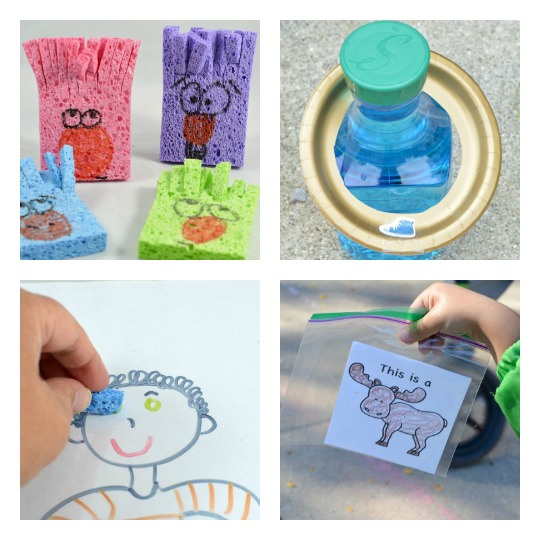
Here are some more great rhyming activities to try.
Rhyming Dust Bunnies (top left picture)
Erase Me Rhyme (bottom left picture)
Rhyming Ring Toss (top right picture)
Forest Animal Rhyming Hunt (bottom right picture)
Segmentation of Words into Syllables
I’ve found that simply clapping while saying a word helps a child segment a word into syllables. Children always like to start with their own names and the names of their friends. The word table would get two claps- ta ble.
Here are segmenting activities to try.
Awareness of Initial Consonant Segments
Play a game of picky puppet. You will need a simple sock puppet and some picture cards. Picky puppet only likes things that begin with a sound it chooses. For example, if picky puppet likes cookies, then it will only want the child to select picture cards that begin with /c/.
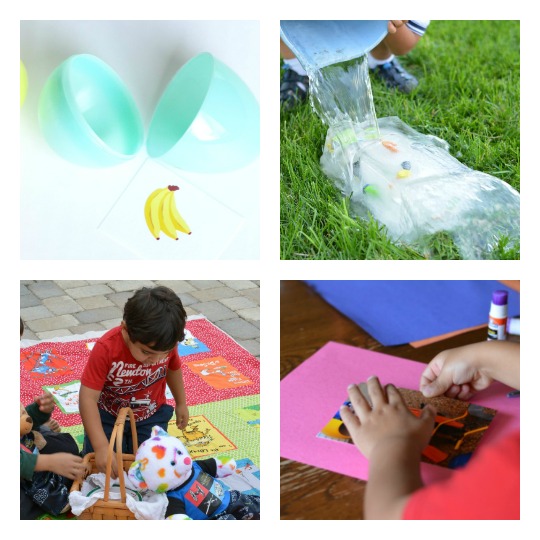
Play a few of these activities to work on beginning sounds.
Ice Melt and Break (top right picture)
Teddy Bear Beginning Sound Picnic (bottom left picture)
Beginning Sounds Pancakes (also has a phonics piece)
My Family Beginning Sounds Book (bottom right picture)
Egg Hatch (top left picture and also has a phonics piece)
Beginning Sounds Leaf Sticker Tree
Alliteration
Create silly alliteration sentences with family members’ names. Here are a few examples to get you started.
Silly snakes slowly slither straight.
Big bubbles blow beyond bikes and balls.
Try this fun Showy Shiny Shapes Alliteration activity too.
And, enjoy these read alouds.—> Target Sound and Alliteration Books
Awareness/Segmentation of Onset and Rime
Play a simple game of I Say, You Say. Call out a one-syllable word such as sun. Then, one person says the onset which in this case is /s/ and the other person says the rime /un/. After a few rounds, switch roles so that each person gets a chance to practice saying both the onset and rime.
Phonemic Segmentation, Blending, and Manipulation
Segmenting is breaking a word into its individual phonemes. Say a word such as hit and have the child segment the sounds /h/ /i/ and /t/.
I like to have the child use their hands like a rubber band and stretch the word out as they segment the sounds.
Another helpful activity is the use of sound boxes. You will need a piece of paper, a pen or marker and a few small objects. Draw three or four connected boxes horizontally. Place a small object under each box. Say a word such as frog. The child pushes an object into the box as they segment the word into phonemes. So, for the word frog they would push up four objects as they say /f/, /r/, /o/ and /g/.
Try these two sound box activities that include FREE printables: Carrot Sound Boxes and Spider Web Boxes.
Blending is the opposite of segmenting. Say the individual phonemes and have the child blend them together to form the word. For example, the adult would say /b/ /i/ and /g/ and the child would say big.
Try this Rainforest Blending Tool.
Manipulation is the trickiest! The Apples and Bananas song is a perfect song to sing with a child to work on this awareness though. You know the one, “I like to eat, eat, eat apples and bananas. I like to oat, oat, oat oh-pples and bo-no-nos…”
How Do I Build Phonological Awareness?
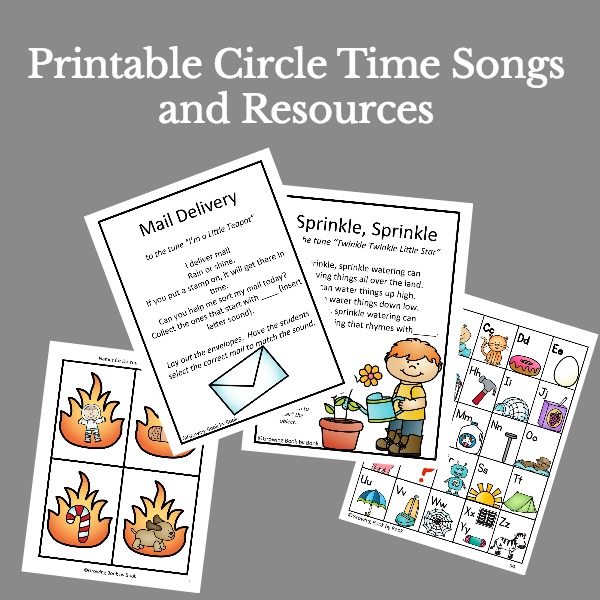
One of the most successful ways to build phonological awareness is through song. 35 Circle Time Songs and Chants to Build Literacy Skills is full of songs and chants to build phonemic and phonological awareness.—>CHECK OUT 35 CIRCLE TIME SONGS AND CHANTS
What questions do you have about phonological awareness? Drop your question below in the comments.
RELATED POSTS
Preschool Phonological Awareness Ideas
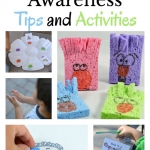
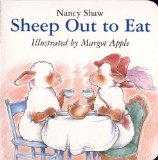
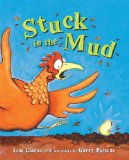


Judith Brooke says
Thank you Jodie for these wonderful resources and suggestions!
As an SLP, I’m always looking for new ideas to embed phonological awareness activities into therapy sessions and for groups of preschoolers. You’ve also done such a great job explaining and de-mystifying both phonological and phonemic awareness!! I love your emails, resources, and enthusiasm for teaching/learning. Thank you!
Jodie Rodriguez says
Thank you so much!
michelle says
thank you for this post. i usually read your blog for book ideas for my elementary-aged children, but am definitely going to use this post for playing some language games with my 4 year old! Can i ask a related question? do you have any ideas for remedial work with an older child who missed strong phonics instruction in the younger years? my 11-year old is a strong reader (she read advanced books and has strong comprehension) but simply cannot spell (not even simple words). and when she learns a new word, she almost always pronounces it wrongly. she seems unable to sound words out. i attribute it to weak instruction early on, as i recall in kinder her teacher told her a lot to just guess at words. my son had a different teacher, and i remember being surprised at all the work they did on letter sounds and blends, rhyming, syllables, etc. i’ve looked into getting her a spelling program but am overwhelmed at the choices and don’t know where to start with an older child. her school focuses very little on spelling / vocab, and it is even less this year because they are virtual and spell check fixes everything for her. she does do “caesar’s english” and stems at school, which helps a tiny bit, but it’s just scraping the surface. thanks so much if you can offer any tips!
Jodie Rodriguez says
Thank you for your question. I’m a big fan of All About Spelling which is something you can supplement with at home. It is phonics-based and each lesson builds on the previous one. The lessons are easy to follow and the book is inexpensive. Here is a link: https://www.allaboutlearningpress.com/all-about-spelling/
Rose Kane says
Thank you! this was very helpful!
Miriam Fein says
One important correction: “frog” has 4 phonemes: /f/ /r//o/ /g/
In order to read and spell, it’s necessary to pull apart each individual sound in those consonant blends and so it’s better to not teach them as a unit. Otherwise you end up with the common error pattern of inserting sounds when they read, e.g. reading “frog” instead of “fog”.
Jodie Rodriguez says
Thank you for catching that mistake. Yes, “frog” has four phonemes.